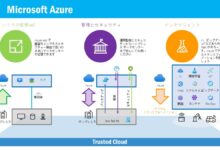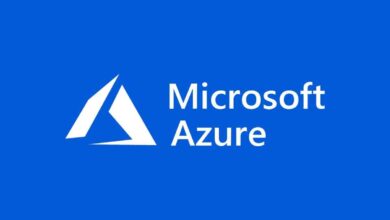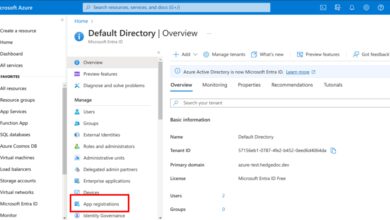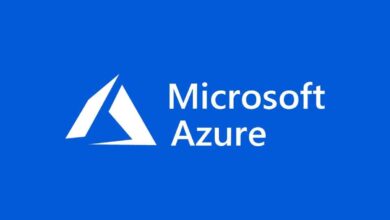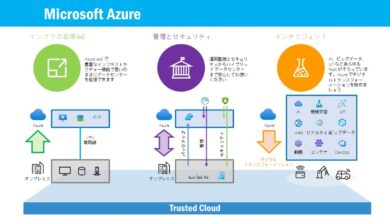Azure Price Cal: 7 Powerful Tips to Master Cloud Cost Control
Managing cloud expenses can feel like navigating a maze—especially when you’re dealing with a vast ecosystem like Microsoft Azure. That’s where Azure Price Cal comes in, a powerful tool designed to bring clarity, predictability, and control to your cloud spending. Whether you’re a startup or an enterprise, understanding how to leverage this tool is essential for staying within budget while maximizing performance.
What Is Azure Price Cal and Why It Matters

Azure Price Cal is not just another calculator—it’s a strategic resource for estimating, analyzing, and optimizing your cloud costs on Microsoft Azure. While the official name used by Microsoft is the Azure Pricing Calculator, many users refer to it colloquially as ‘Azure Price Cal’. This tool allows users to model their expected infrastructure, select services, and receive real-time cost estimates before deploying any resources.
Understanding the Official Azure Pricing Calculator
The Azure Pricing Calculator is a free, web-based tool provided by Microsoft that enables users to estimate the cost of Azure services based on their specific usage scenarios. It covers a wide range of offerings including virtual machines, storage, networking, databases, AI, and more. You can customize configurations down to the region, instance type, and even reserved instance terms.
One of the key advantages of the Azure Price Cal is its integration with real-time pricing data. As Microsoft updates pricing across regions and services, the calculator reflects those changes instantly, ensuring your estimates are as accurate as possible.
How Azure Price Cal Differs from TCO Calculator
It’s important to distinguish between the Azure Price Cal and the Total Cost of Ownership (TCO) Calculator. While both tools help with financial planning, they serve different purposes. The TCO Calculator compares on-premises infrastructure costs with moving to Azure, factoring in hardware, maintenance, power, and labor. In contrast, Azure Price Cal focuses purely on estimating the cost of Azure services once you’ve decided to migrate or scale in the cloud.
“The Azure Pricing Calculator is the first stop for any architect or finance lead planning a cloud deployment—it turns abstract ideas into concrete numbers.” — Microsoft Azure Architect Guide
Key Features That Make Azure Price Cal a Game-Changer
The Azure Price Cal isn’t just functional—it’s packed with features that empower teams to make smarter financial decisions. From granular service selection to exportable reports, it’s built for both technical and non-technical stakeholders.
Real-Time Cost Estimation Across Services
One of the most powerful aspects of Azure Price Cal is its ability to provide instant cost feedback as you configure resources. For example, if you’re setting up a virtual machine, you can toggle between different series (like Dv3 vs. Ev4), adjust CPU and memory, and immediately see how each change impacts the monthly cost.
This real-time feedback loop is invaluable during the design phase. Teams can experiment with configurations without incurring actual charges, helping them identify the most cost-effective setup early in the process.
- Supports over 100 Azure services
- Updates pricing dynamically based on region and usage
- Allows hourly and monthly cost views
Customizable Scenarios and Sharing Capabilities
Azure Price Cal lets you save and name your estimates, creating what Microsoft calls ‘scenarios’. This is especially useful for comparing different architectural approaches—such as deploying a web app using Azure App Service versus a VM-based setup.
Moreover, you can generate a shareable link to your scenario, allowing stakeholders across departments—finance, development, operations—to review and collaborate on the same estimate. This transparency fosters better decision-making and alignment across teams.
Export and Reporting Tools
Once your estimate is complete, Azure Price Cal allows you to export the data in CSV format. This feature is crucial for integrating cloud cost projections into broader financial planning systems, such as Excel models or enterprise resource planning (ERP) tools.
The exported file includes detailed line items: service name, configuration, region, quantity, and estimated monthly cost. This level of detail supports auditability and helps finance teams validate cloud spend forecasts.
How to Use Azure Price Cal: A Step-by-Step Guide
Getting started with Azure Price Cal is straightforward, but mastering it requires understanding its full capabilities. Here’s a comprehensive walkthrough to help you build accurate and insightful cost models.
Step 1: Access the Azure Pricing Calculator
Navigate to https://azure.microsoft.com/en-us/pricing/calculator/. No login is required to start building estimates, though signing in with a Microsoft account allows you to save and manage your scenarios.
Upon arrival, you’ll see a clean interface with a search bar and categorized service listings. You can begin by searching for a specific service or browsing by category such as Compute, Storage, or AI + Machine Learning.
Step 2: Add and Configure Services
Click on a service to add it to your estimate. For instance, selecting ‘Virtual Machines’ opens a configuration panel where you can choose:
- Region (e.g., East US, West Europe)
- VM series and size (e.g., B2s, D4s_v3)
- Operating system (Windows or Linux)
- Number of instances
- Uptime (e.g., 24/7 vs. 12 hours/day)
Each selection updates the cost estimate in real time. You can also enable features like Availability Zones or add managed disks for additional resilience.
Step 3: Optimize with Reserved Instances and Savings Plans
To get the most accurate Azure Price Cal estimate, consider long-term pricing options. Microsoft offers two main ways to reduce costs:
- Reserved Virtual Machine Instances: Commit to 1- or 3-year terms for up to 72% savings.
- Compute Savings Plans: Flexible commitment across compute services with up to 65% savings.
In the calculator, you can toggle these options to see how much you’d save by committing upfront. This is especially useful for predictable workloads like production databases or backend services.
“Using reserved instances in your Azure Price Cal model can reveal six-figure annual savings for large-scale deployments.” — Cloud Economics Report 2023
Common Use Cases for Azure Price Cal
The versatility of Azure Price Cal makes it applicable across industries and organizational sizes. From startups validating MVP costs to enterprises planning multi-region rollouts, the tool delivers value in numerous scenarios.
Startup MVP Cost Planning
For startups building a minimum viable product (MVP), budget constraints are critical. Azure Price Cal allows founders to model their initial infrastructure—such as a web app, database, and CDN—without over-provisioning.
By using low-cost services like Azure App Service (Free or Basic tier) and Azure SQL Database (Serverless), startups can keep monthly costs under $100 while still delivering a scalable solution. The calculator helps validate these assumptions before writing a single line of code.
Enterprise Migration Budgeting
When large organizations migrate from on-premises data centers to Azure, financial forecasting becomes a top priority. Azure Price Cal enables IT leaders to model the cost of lifting and shifting workloads, including VMs, storage, and networking.
For example, a company moving 500 VMs across three regions can use the calculator to estimate not only compute costs but also data transfer fees, backup storage, and monitoring tools like Azure Monitor. This comprehensive view supports capital approval and stakeholder buy-in.
Disaster Recovery and Multi-Region Deployments
Designing a disaster recovery (DR) strategy often involves running redundant systems in secondary regions. Azure Price Cal helps estimate the cost of maintaining standby environments, including replicated VMs, storage, and networking bandwidth.
Teams can compare active-passive vs. active-active architectures and evaluate the trade-offs between cost and recovery time objectives (RTO). This ensures that DR plans are both resilient and financially sustainable.
Advanced Tips to Maximize Azure Price Cal Accuracy
While the Azure Price Cal is user-friendly, achieving high accuracy requires attention to detail. Many users underestimate costs because they overlook hidden fees or fail to account for usage patterns. Here are advanced strategies to refine your estimates.
Factor in Data Transfer and Egress Costs
One of the most commonly missed cost components in Azure Price Cal is data egress—the cost of moving data out of Azure. While inbound data is free, outbound transfers incur charges, especially when crossing region boundaries or delivering content to global users.
For example, if your application serves 10 TB of data per month to users outside Azure, you could face thousands in egress fees. In the calculator, under ‘Networking’, you can add ‘Bandwidth’ to model these costs accurately.
- Inter-region transfers: ~$0.01–$0.05 per GB
- Outbound to internet: ~$0.08–$0.19 per GB (varies by volume and region)
- Inbound data: Always free
Account for Managed Services and Monitoring
Modern cloud architectures rely heavily on managed services like Azure Kubernetes Service (AKS), Azure Functions, and Azure Monitor. While these reduce operational overhead, they also add to your bill.
In Azure Price Cal, you can add services like:
- Azure Monitor: For logging and alerting (billed per GB ingested)
- Azure Backup: For VM and file protection (based on storage used)
- Azure Security Center: For threat detection and compliance
Ignoring these can lead to a 20–30% underestimation of total costs.
Use Tags and Grouping for Complex Projects
For large-scale deployments, organizing your estimate using tags and groupings is essential. Azure Price Cal allows you to group services by environment (dev, test, prod), department, or project.
This not only improves readability but also enables cost allocation modeling. For instance, you can create separate groups for frontend, backend, and database layers, then analyze which component drives the highest spend.
“Tagging in Azure Price Cal is the foundation of chargeback and showback models in enterprise cloud governance.” — Gartner Cloud Cost Management Guide
Integrating Azure Price Cal with Other Cost Management Tools
While Azure Price Cal is excellent for pre-deployment planning, ongoing cost management requires additional tools. Fortunately, Microsoft provides a suite of services that complement the calculator and extend its value into production environments.
Azure Cost Management + Billing
Once your resources are live, Azure Cost Management + Billing becomes your go-to tool for tracking actual spend. It integrates with the Azure Price Cal estimates by allowing you to compare forecasted vs. actual costs.
Key features include:
- Cost analysis dashboards
- Budget creation and alerts
- Recommendations for savings (e.g., shutting down idle VMs)
- Integration with Enterprise Agreements and CSP billing
By aligning your Azure Price Cal scenarios with real-world data in Cost Management, you close the loop between planning and execution.
Third-Party Tools and Integrations
Many organizations use third-party cloud financial management (FinOps) platforms like CloudHealth by VMware, Apptio Cloudability, or Azure-native tools like Turbonomic. These tools can import data from Azure Price Cal or replicate its functionality with enhanced analytics.
For example, CloudHealth allows you to model multi-cloud scenarios (Azure + AWS + GCP), while Azure Price Cal is Azure-only. However, starting with Azure Price Cal ensures your baseline estimates are grounded in official Microsoft pricing.
Automating Estimates with Azure Pricing API
For developers and DevOps teams, Microsoft offers the Azure Pricing API, which exposes the same data used in Azure Price Cal. This allows you to automate cost estimation within CI/CD pipelines or internal tools.
For instance, you could build a custom dashboard that shows the cost impact of every code deployment, or integrate cost checks into pull requests. This proactive approach embeds financial accountability into the development lifecycle.
Common Mistakes to Avoid When Using Azure Price Cal
Even experienced cloud users can fall into traps when estimating costs. Here are the most frequent errors and how to avoid them.
Overlooking Hidden Costs Like Support and Licensing
Many Azure services require additional licensing, especially for enterprise software like SQL Server or Windows Server. While the base VM cost might seem low, adding a licensed OS can double the price.
Similarly, support plans (Basic, Developer, Standard, Professional Direct) are not included in service costs. If you need 24/7 technical support, factor in these fees during estimation.
Assuming All Services Are Included in Free Tier
Azure offers a generous free tier with $200 credit for new users and 12 months of free services. However, not everything is free—and some services have usage limits.
For example, Azure App Service has a free tier, but it doesn’t support custom domains or SSL. If your project requires these, you’ll need to upgrade to a paid plan. Always verify the fine print in the calculator to avoid surprise bills.
Failing to Update Estimates for Changing Requirements
Cloud projects evolve. A prototype might start small but scale rapidly. If you don’t revisit your Azure Price Cal estimate as your architecture grows, you risk budget overruns.
Best practice: Schedule monthly reviews of your cost models, especially during the early stages of a project. Update instance counts, storage needs, and data transfer assumptions to reflect real-world usage trends.
What is Azure Price Cal?
Azure Price Cal is a colloquial term for the official Azure Pricing Calculator, a free tool from Microsoft that helps users estimate the cost of Azure services before deployment. It supports real-time pricing, scenario modeling, and exportable reports.
Is the Azure Pricing Calculator accurate?
Yes, the Azure Price Cal uses real-time pricing data from Microsoft and is highly accurate for estimating service costs. However, it doesn’t account for unexpected usage spikes or hidden fees like support plans, so it should be used as a planning tool, not a guaranteed invoice.
Can I save and share my Azure Price Cal estimates?
Yes, you can save your estimates as scenarios and generate shareable links. Signing in with a Microsoft account allows you to manage and revisit your estimates later.
Does Azure Price Cal include data transfer costs?
Yes, you can manually add bandwidth and data transfer costs in the Networking section. However, users often forget to include egress fees, which can significantly impact total cost.
How can I reduce costs in Azure Price Cal?
You can reduce estimated costs by selecting reserved instances, using serverless options, choosing lower-cost regions, and enabling autoscaling. The calculator allows you to toggle these options to see potential savings.
Mastering Azure Price Cal is a critical skill for anyone involved in cloud planning and budgeting. It transforms vague ideas into precise financial models, enabling smarter decisions and better resource allocation. From startups to global enterprises, this tool provides the transparency needed to harness Azure’s power without overspending. By combining accurate estimation, advanced configuration, and integration with ongoing cost management tools, you can achieve true financial control in the cloud. The key is to use Azure Price Cal not just once, but as an ongoing part of your cloud lifecycle—planning, deploying, and optimizing with confidence.
Recommended for you 👇
Further Reading:




